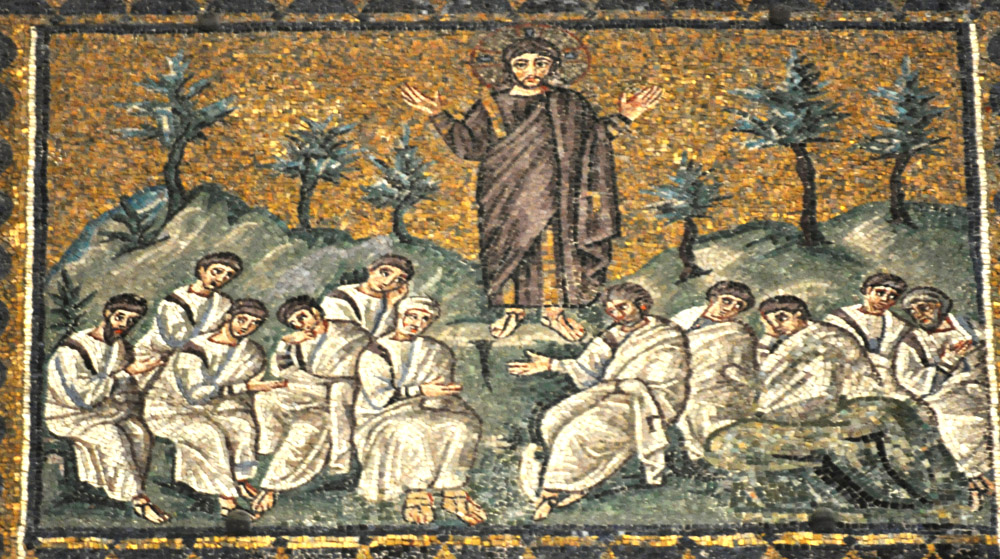Jesus in the Garden of Gethsemane

6th century
Mosaic
Church of Sant'Apollinare Nuovo, Ravenna
In the gospels, after the Last Supper Jesus takes his apostles (minus Judas) to pray in the Garden of Gethsemane (Mt 26:36-46, Mk 14:32-42, Lk 22:39-46, Jn 18:1). Here we see him in orant position – that is, with his arms extended in prayer. As throughout the Passion cycle, his toga is purple and the apostles' are white.
The gospel passages show Jesus struggling with sorrow and dread, but in the mosaic he prays calmly in a pastoral setting. This may be because the artist or sponsor wanted to avoid possible Arian implications of a fearful Jesus.1
The image is also kinder to the apostles than the gospel passages, which say they fell asleep while Jesus was praying in his agony. Here we see them engaged in some sort of lively discussion.
This is one of the 13 mosaics of the Passion and Resurrection of Christ along the right wall of the nave. It can be identified as Gethsemane because there are only 11 apostles and because in the series on the wall it is between the Last Supper and the Kiss of Judas. The two figures at Jesus' feet are St. Peter, identified by the short, square beard, and St. Andrew, identified by his wild hair. Throughout the mosaics on both walls, Peter always has gray hair, presumably a sign of his "senior" status.
View this image in full resolution.
View the entire right wall and left wall of the nave.
Read more about images of the apostles as a group, Gethsemane, St. Peter, and St. Andrew.
Go to the Christian Iconography home page.
Photographed at the church by Richard Stracke, shared under Attribution-NonCommercial-ShareAlike license.
The church was built as an Arian facility in 504 and reconsecrated Catholic in 561. See "Basilica of Sant'Apollinare Nuovo" in Wikipedia (retrieved 2013-09-25). For the christological problems in the Gethsemane passages, see Madigan 63-71.